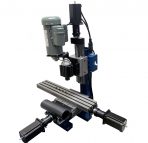Stepper motors and servo motors have some similarities and many differences. In general, stepper motors are controllable in steps without feedback whereas servo motors require a feedback device to make adjustments accordingly.
Troubleshooting these two staples of industrial machinery is not all that complex when you have a basic understanding of electricity and some proficiency using a multimeter. A general familiarity with motors and their operation and design is an added advantage as well.
Stepper motors and servo motors can be found in virtually every industrial environment these days. The complexity of industrial machines and the modern controls that make them so efficient usually feature a servo motor or stepper for some type of motion control. Mechanical ratchets and gears, as well as a human-guided movement, have long been replaced by these precision motors.
You can buy stepper motors by visiting www.automationtechnologiesinc.com/products-page/stepper-motors.

Before beginning any troubleshooting of industrial equipment, the maintenance personnel or the individual responsible for troubleshooting and repair should take all steps required to ensure his or her own safety and the safety of those in the area of the machinery. Proper lockout, tagout, and verification that the machine is energy-free are the responsibility of everyone involved in the troubleshooting.
We need to remember that the motor is just one part of a motion control system. Once you have verified that the rest of the system is functioning normally, you can then proceed to determine if the motor has failed using a few simple tests. These tests can be performed using a standard multimeter or a megohmmeter if one is available.